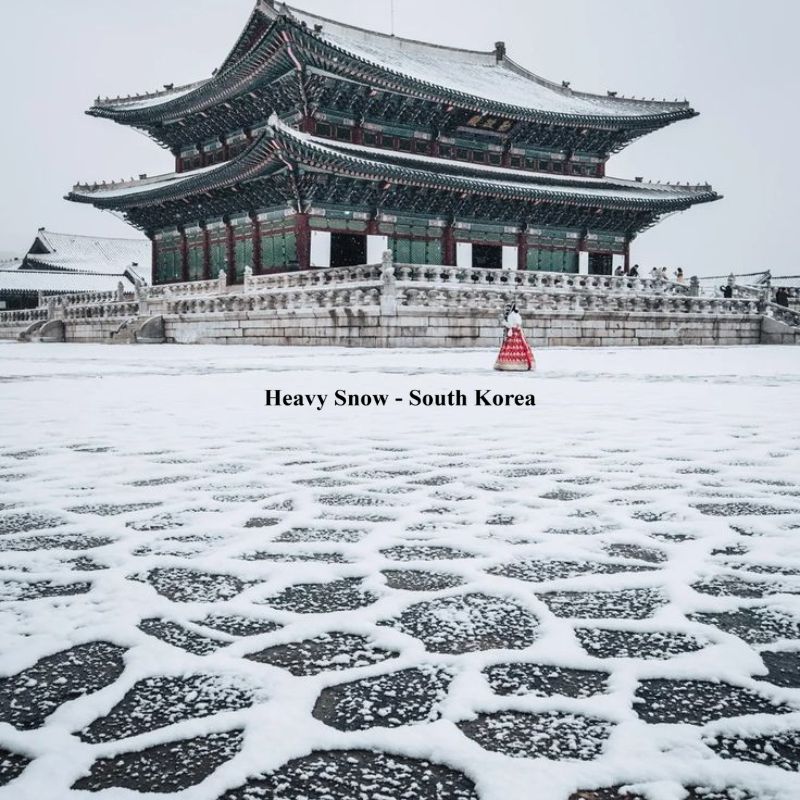 Heavy Snow – South Korea. January 2025 brought quite an extreme winter to South Korea. The country known for having four seasons experienced a significant drop in temperature compared to previous years. Based on a report from the Korea Meteorological Administration (KMA), the average temperature in Seoul and its surroundings reached -7°C to -12°C, with some mountainous areas recording temperatures as low as -20°C at night.
Heavy Snow – South Korea. January 2025 brought quite an extreme winter to South Korea. The country known for having four seasons experienced a significant drop in temperature compared to previous years. Based on a report from the Korea Meteorological Administration (KMA), the average temperature in Seoul and its surroundings reached -7°C to -12°C, with some mountainous areas recording temperatures as low as -20°C at night.
This extreme cold weather is partly caused by a wave of Arctic air
Heavy Snow – South Korea. The extreme cold weather was partly caused by a stronger-than-usual arctic air wave, which brought in cold air masses directly from Siberia. This phenomenon extended the period of freezing temperatures across much of Korea, including major cities such as Seoul, Incheon, and Busan.
Seoul Experiences Several Snowstorms
Snow is also falling more frequently and in greater volumes. Seoul, for example, has experienced several light to moderate snowstorms that have seen snowfalls exceed 15 cm in some areas. In the Gangwon-do region, particularly around the Taebaek Mountains, heavy snow is a common sight, even triggering some road closures and public transportation disruptions.
This winter also brings blessings to Korea’s winter tourism industry.
Despite the extreme weather, this winter has also brought blessings to Korea’s winter tourism industry. Places like Pyeongchang and Yongpyong Ski Resort are crowded with domestic and international tourists who want to enjoy snow sports. Winter festivals like the Hwacheon Sancheoneo Ice Festival.
South Korean Government’s Cold Weather Early Warning
The South Korean government has issued several early warnings of cold weather, especially for vulnerable groups such as the elderly and children.
Overall, January 2025 marked a harsher than usual winter on the Korean Peninsula. This change in weather patterns also serves as a reminder of the importance of mitigating. South Korea has issued a warning to its citizens to avoid hypothermia due to extreme cold temperatures.
